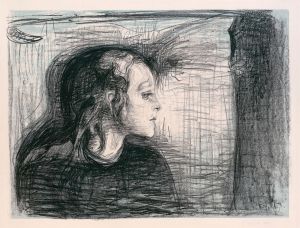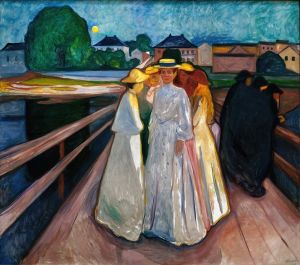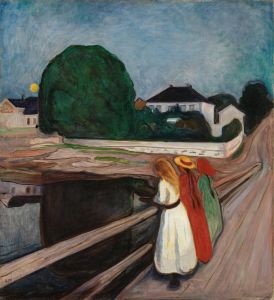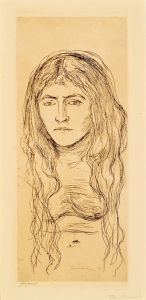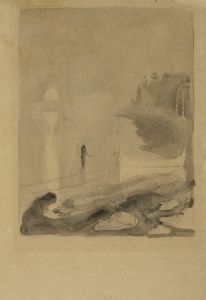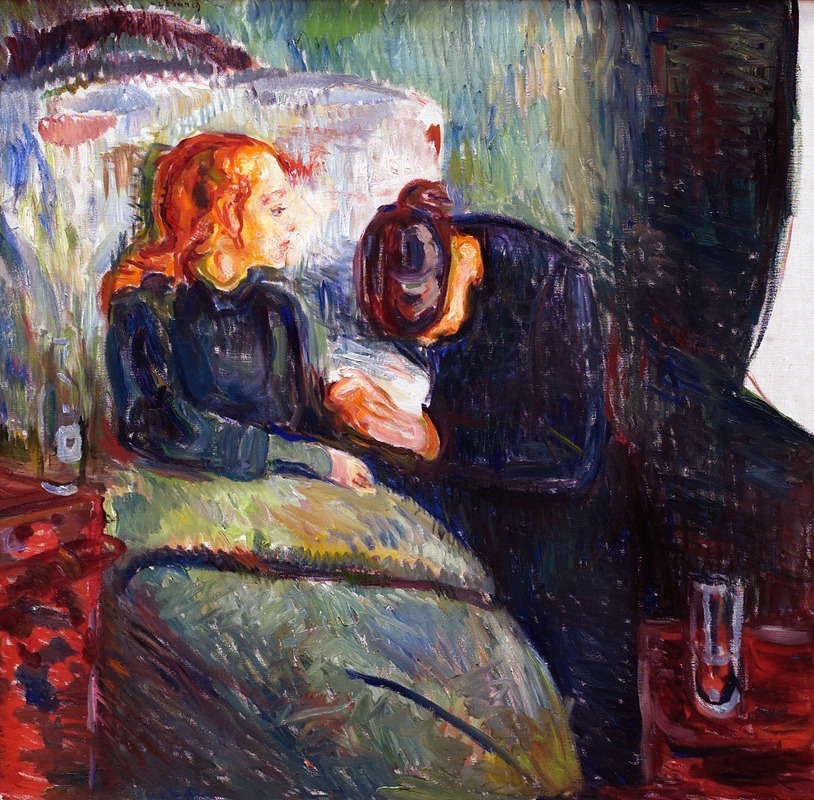
The Sick Child
A hand-painted replica of Edvard Munch’s masterpiece The Sick Child, meticulously crafted by professional artists to capture the true essence of the original. Each piece is created with museum-quality canvas and rare mineral pigments, carefully painted by experienced artists with delicate brushstrokes and rich, layered colors to perfectly recreate the texture of the original artwork. Unlike machine-printed reproductions, this hand-painted version brings the painting to life, infused with the artist’s emotions and skill in every stroke. Whether for personal collection or home decoration, it instantly elevates the artistic atmosphere of any space.
"The Sick Child" is a significant work by Norwegian artist Edvard Munch, painted in 1885–1886. This painting marks a pivotal moment in Munch's career, as it represents a departure from his earlier works and the beginning of his exploration into themes of illness, death, and emotional suffering, which would become central to his oeuvre.
The painting depicts a young girl, bedridden and frail, with a woman, presumably her mother, sitting beside her. The girl's pale complexion and the somber atmosphere convey a sense of impending loss and grief. The work is believed to be inspired by the death of Munch's older sister, Johanne Sophie, who died of tuberculosis at the age of 15. This personal tragedy had a profound impact on Munch, influencing much of his later work.
Munch's approach in "The Sick Child" is notable for its emotional intensity and innovative use of color and brushwork. The painting is characterized by loose, expressive brushstrokes and a muted color palette, which contribute to its haunting and melancholic mood. The background is indistinct, focusing the viewer's attention on the figures and their emotional states. This technique was a departure from the more detailed and realistic style that was prevalent in Norwegian art at the time.
"The Sick Child" was met with mixed reactions when it was first exhibited. Some critics praised its emotional depth and originality, while others were unsettled by its raw portrayal of suffering and its unconventional style. Despite the initial controversy, the painting is now regarded as a masterpiece and a key work in Munch's development as an artist.
Munch revisited the theme of "The Sick Child" several times throughout his career, creating multiple versions of the painting in different media, including lithographs and etchings. Each version reflects Munch's evolving style and his continued preoccupation with themes of illness and mortality.
The painting is housed in the National Gallery in Oslo, Norway, where it remains one of the most important works in the collection. It is considered a seminal piece in the history of modern art, illustrating Munch's transition from naturalism to symbolism and his role as a precursor to expressionism.
"The Sick Child" not only highlights Munch's personal experiences with illness and loss but also reflects broader societal concerns of the time, as tuberculosis was a widespread and deadly disease in the late 19th century. The painting's enduring impact lies in its ability to convey universal emotions of grief and compassion, resonating with audiences across different cultures and eras.
In summary, "The Sick Child" is a landmark painting in Edvard Munch's career, representing a shift towards a more expressive and emotionally charged style. Its exploration of personal and universal themes has secured its place as a significant work in the canon of modern art.











